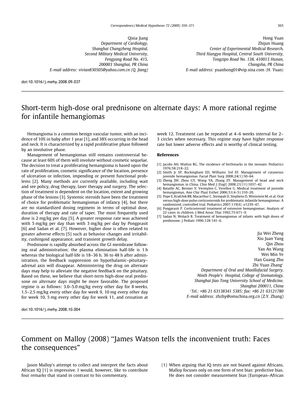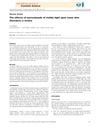Comment on Malloy (2008): James Watson Tells the Inconvenient Truth and Faces the Consequences
November 2008
in “
Medical Hypotheses
”

TLDR The conclusion suggests a new treatment for infantile hemangiomas and a potential target for hair loss treatment.
The document discusses two main topics: a proposed treatment regimen for infantile hemangiomas and a hypothesis regarding the molecular mechanism of androgenetic alopecia (AGA). For infantile hemangiomas, which are common benign vascular tumors, the authors suggest a short-term high-dose oral prednisone treatment on alternate days. The proposed regimen includes doses of 3.0-5.0 mg/kg every other day for 8 weeks, with a tapering schedule following, and the possibility of repeating the treatment at 4-6 week intervals for 2-3 cycles. This approach aims to achieve a higher response rate with lower adverse effects and is recommended for clinical testing.
Regarding AGA, the document hypothesizes that dihydrotestosterone (DHT) affects hair growth through vascular endothelial growth factor and its receptor (VEGF/VEGFR). DHT may reduce VEGF production, leading to decreased vascularization of the hair follicle and diminished blood flow to the pilosebaceous unit, resulting in hair loss. Additionally, DHT binding to androgen receptors in hair follicles could down-regulate VEGF expression in dermal papilla cells, shortening the anagen phase and leading to hair loss. The document suggests that this molecular mechanism involving VEGF/VEGFR could be a target for AGA treatment.





